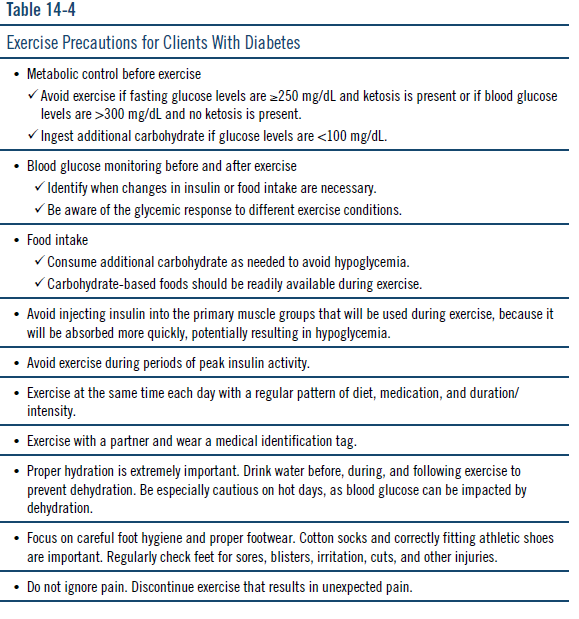When working with special populations, it is important to be informed of the variables that make each client unique. Given the increasing prevalence of diabetes, it is likely you will work with a client who has this condition. To be able to provide safe and effective exercise programs for these clients, here are five things you need to know about diabetes:
1. The Types
There are three types of diabetes. Type 1 diabetes is generally diagnosed in children and young adults. In this type of diabetes, the body does not produce a hormone called insulin, which is used to regulate blood sugar. In addition to a healthy, balanced diet, insulin injections/pumps can be used to help those with type 1 diabetes.
Type 2 diabetes, previously known as adult onset diabetes, is diagnosed when the body is unable to use the insulin that the pancreas produces. This is also called hyperglycemia (high blood sugar). According to the American Diabetes Association (ADA), type 2 diabetes is the most common form of diabetes.
A third type of diabetes is called gestational diabetes, which is diagnosed during pregnancy when the mother’s blood sugar levels rise to a higher-than-normal level. Little is known about what actually causes gestational diabetes to happen, but the ADA concludes that the hormones produced by the placenta during the gestational period may be blocking the hormones responsible for regulation blood sugar in the mother’s body.
2. The Facts
In 2012, almost 30 million American suffered from diabetes, according to the ADA. Of this number, 8.1 million were undiagnosed cases.
In 2010, diabetes was the seventh leading cause of death in America.
American Indians/Alaskan Natives have the highest prevalence of diabetes by race/ethnic group, with 15.9 percent of the population having been diagnosed with diabetes.
The total cost for diagnosed diabetes care in the U.S. in 2012 was $245 billion.
The healthcare costs for people with diagnosed diabetes are 2.3 times higher than those who do not have the disease, according to the ADA.
3. Insulin and Glucagon
Insulin and glucagon are both important hormones that are produced by the pancreas to regulate blood sugar levels. When you eat food and your blood sugar level rises, insulin is released into the blood stream to lower your blood sugar back to resting levels (homeostasis). When you have not eaten, or have low blood sugar, glucagon is released to raise your blood sugar level back to normal levels.
4. Modifications for Clients with Diabetes
Working with clients with diabetes can be very rewarding; however, there are precautions that you must exercise when working with this group. Take a close look at this table from the fifth edition of the ACE Personal Trainer Manual.

5. How Diabetes Can Affect Exercise Intensity
Complications of diabetes can make it difficult to accurately monitor a client’s heart rate. Therefore, for these clients it is best to use ratings of perceived exertion (RPE) to monitor exercise intensity. Because of the increased risk for hypoglycemia (low blood sugar), long-duration activities should be avoided. Similarly, very high-intensity exercise can increase the risk for hyperglycemia (high blood sugar). Monitoring RPE during activity and testing blood sugar before and after exercise will help in finding the appropriate intensity for these clients.
Helpful Links
Diabetes: Understanding the Effects of Insulin in on the Body




 by
by 





 by
by